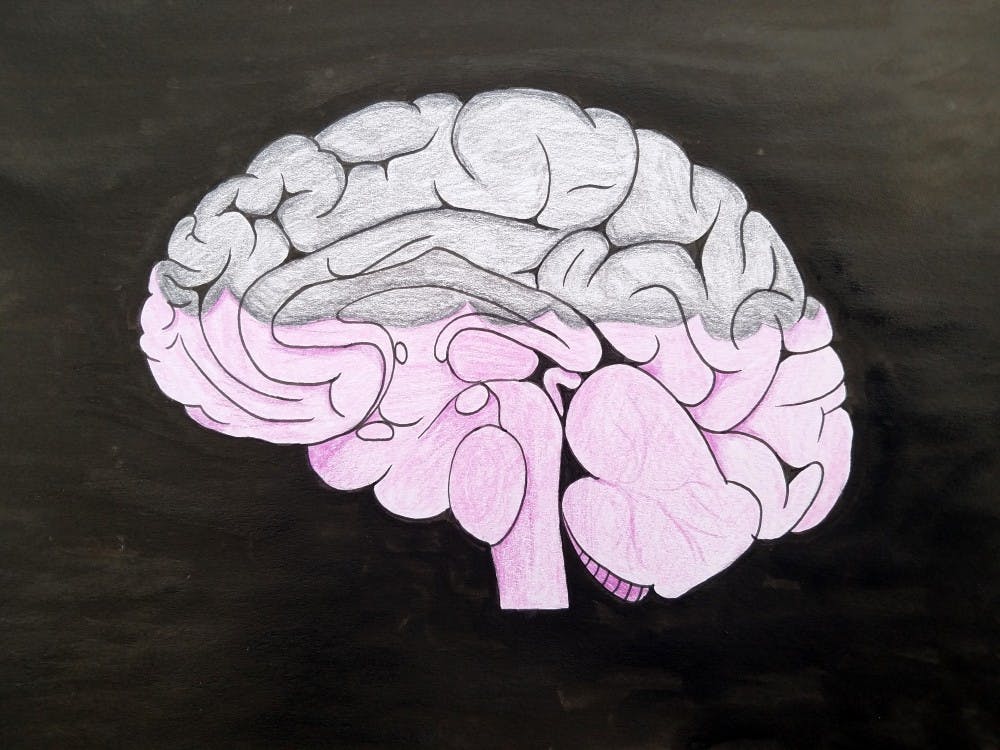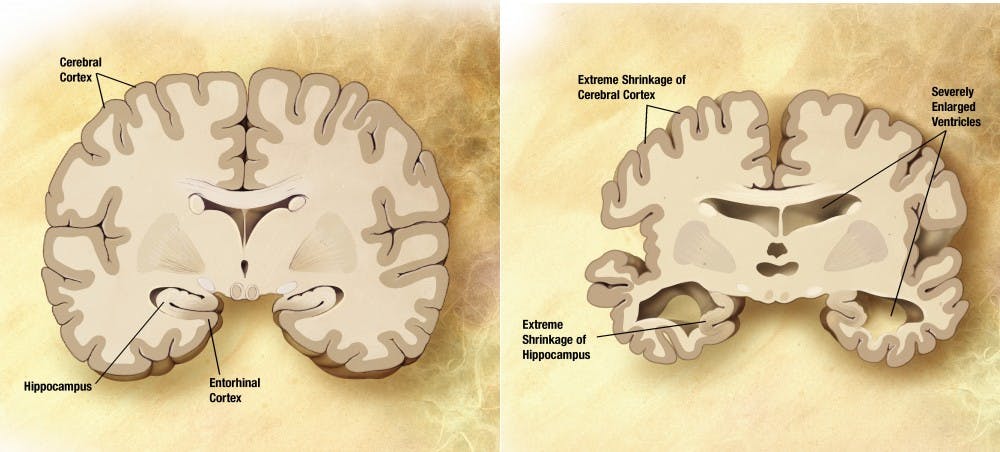61 percent of 70-year-old Americans with Alzheimer's disease are expected to die before they reach 80 years old – a rate twice as high as those without the disease, according to the Alzheimer's Association.
Although there are some genetic factors that could increase one's risk of developing Alzheimer's, the majority of all cases are due to unknown reasons within the environment and one's personal lifestyle.
According to the National Institutes of Health, it seems as though age is the primary risk factor for developing this disease. It is hard to pinpoint why an aging brain seems to be susceptible to these types of diseases, with the aging of the brain being a complicated process in itself.
Read more about the aging brain here.
As the U.S. population gets older, there will be more people at risk of developing Alzheimer's and there will need to be national changes made to address how the U.S. will care for this group.
It is projected that in 2050 there will be approximately 83.7 million people who are age 65 and older, according to the U.S. Census Bureau. This is double than what it was in 2012. The surviving baby-boomer generation will be over 85 years old in 2050, making for a large portion of Americans at a high risk for Alzheimer's.
The main pathology of Alzheimer's is complicated, but there are two main hallmark brain lesions — called plaques and tangles — that cause the disease.
A plaque, in reference to the brain, is a buildup of debris. In the case of Alzheimer's, it is a buildup of a specific type of protein, called beta amyloid.
These protein plaques usually begin in the hippocampus, which is the brain that encodes memory, which is why Alzheimer's patients exhibit memory loss.
The plaques then progress outward into all parts of the brain and collect around neurons, prohibiting the brain from functioning properly.
A tangle forms when a specific protein, called tau that is found within neurons, begins to tangle up on itself.
Tau is largely responsible for facilitating the delivery of nutrients from one part of the neuron to the other. As a result, neurons with tau tangles end up dying due to lack of nutrients.
As a result from the two lesions, the brain begins to shrink and cannot perform to the same degree as normal.
A patient with Alzheimer's progressively develops worsening symptoms, usually starting with memory issues until daily tasks like putting on one's socks becomes difficult.
Until now, there have been few known treatments for the disease other than palliative care.
But research done in recent years has broadened our understanding of the brain and disease like Alzheimer's, with funding agencies granting increasingly more money to support research in this field.
Boris DeCourt, a former ASU professor at the ASU-Banner Neurodegenerative Disease Research Center who is currently working at the Cleveland Clinic Nevada, received a multi-million dollar grant a few weeks ago to study inflammation markers that develop in the course of this disease.
Read more: Former ASU professor uses cancer treatment drug to fight Alzheimer's
Along with DeCourt and the ASU-Banner center, there are many neurological disease research centers within ASU's Biodesign Institute and across the University's campuses that produce a large, diverse body of research on the disease and other brain-related conditions.
While there is research being done every day across the world on this disease, the growing number of people who will develop this disease within the next 30 years calls for more preparation to be made.
As of now, the majority of caregivers for Alzheimer's patients live with the patient in the community, according to the Alzheimer's Association.
Caregivers experience an increase in stress, mental health well-being, and strain both physically and financially compared to caregivers of non-Alzheimer's patients, according to the association.
The estimated lifetime cost to care for someone with Alzheimer's is $341,840 dollars.
This population as a whole will only become more expensive to care for as more people grow older and develop the disease, likely leading to an increase in those who have to transition to becoming caregivers.
The College of Health Solutions at ASU has been releasing a series of talks and podcasts titled "We Need to Talk" dedicated to addressing issues related to healthcare delivery.
An episode titled "Dementia 101" brings three prominent figures in the Alzheimer's world together to speak not only about the nearing epidemic of Alzheimer's disease, but also how we must be ready to care for the caregivers of those with the disease.
As the scenario described becomes more imminent, the U.S. will have to figure out how to match the rising number of people with Alzheimer's disease with a rising number of caregivers and resources.
Reach the reporter at mcharbel@asu.edu or follow @CharbelMilo on Twitter.
Like The State Press on Facebook and follow @statepress on Twitter.





